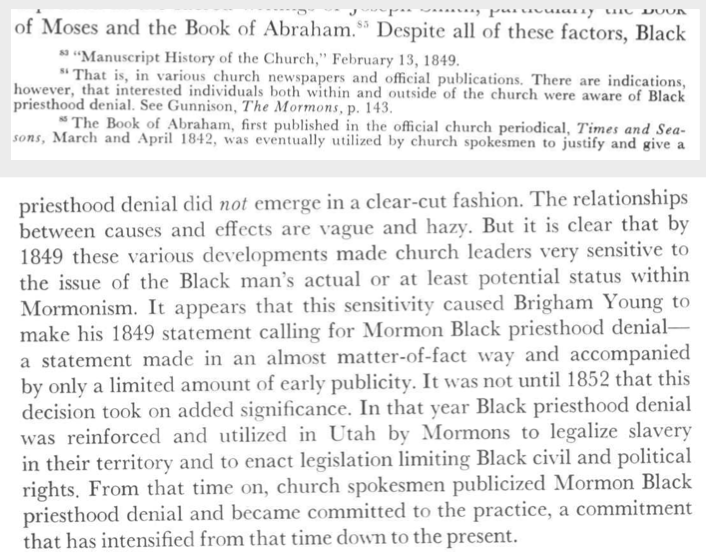Newell Bringhurst argues that the origins of the priesthood ban are unclear.
- Type
- Academic / Technical Report
- Source
- Newell G. Bringhurst LDSDisaffected
- Hearsay
- DirectSecondary
- Reference
Newell G. Bringhurst, "An Ambiguous Decision: The Implementation of Mormon Priesthood Denial for the Black Man--A Reexamination," Utah Historical Quarterly 46, no. 1 (Spring 1978): 64
- Scribe/Publisher
- Utah Historical Quarterly
- Audience
- Reading Public
- Transcription
Despite all these factors, Black priesthood denial did not emerge in a clear-cut fashion. The relationships between causes and effects are vague and hazy. But it is clear that by 1849 these various developments made church leaders very sensitive to the issue of the Black man's actual or at least potential status within Mormonism. It appears that this sensitivity caused Brigham Young to make his 1849 statement calling for Mormon Black priesthood denial—a statement made in an almost matter-of-fact way and accompanied by only a limited amount of early publicity. It was not until 1852 that this decision took on added significance. In that year Black priesthood denial was reinforced and utilized in Utah by Mormons to legalize slavery in their territory and to enact legislation limiting Black civil and political rights. From that time on, church spokesman publicized Mormon Black priesthood denial and became committed to the practice, a commitment that has intensified from that time down to the present.
The B. H. Roberts Foundation is not owned by, operated by, or affiliated with the Church of Jesus Christ of Latter-day Saints.

